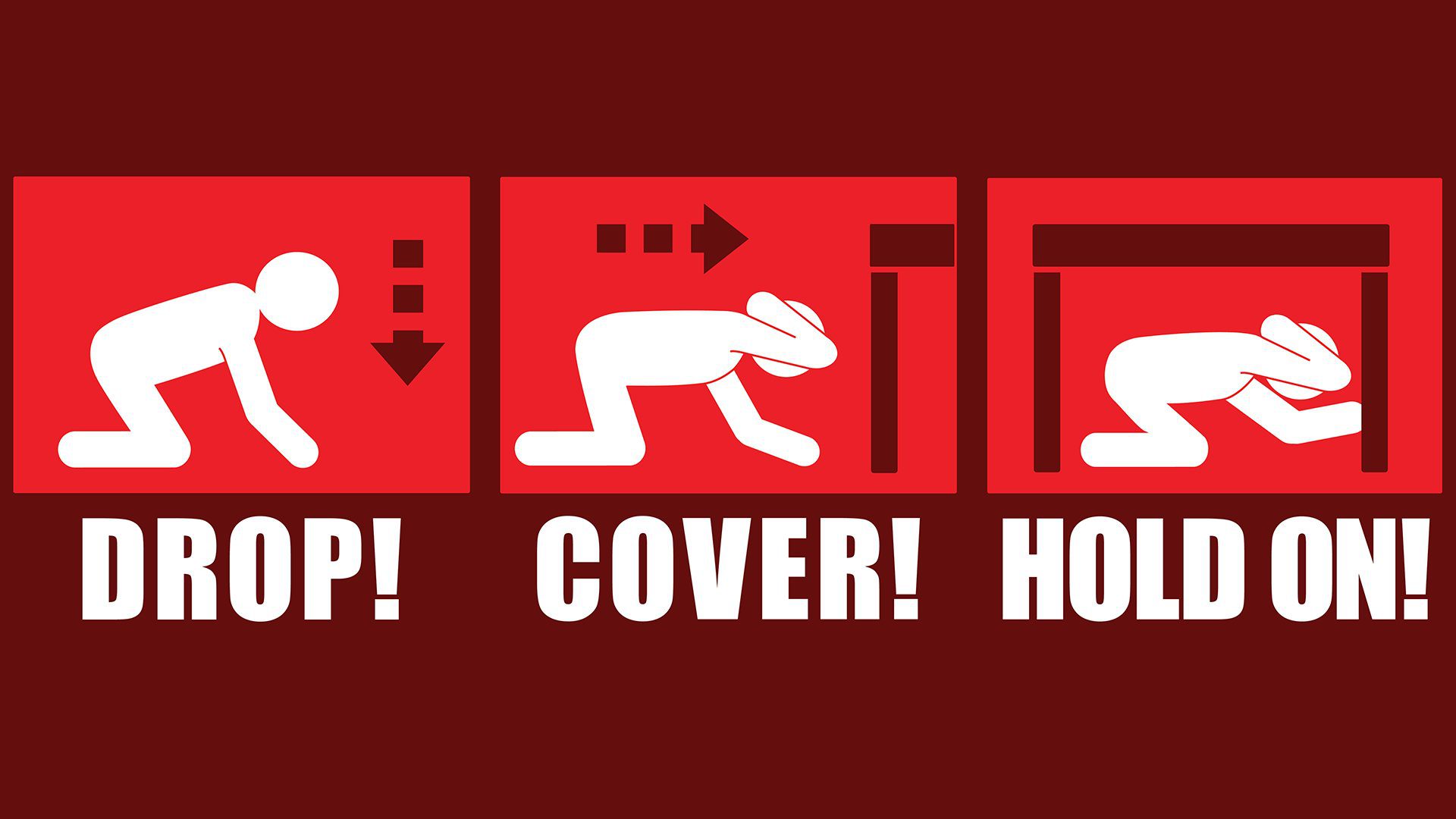At 12:59 PM on Friday, May 20th, 2022, the University of the West Indies Seismic Research Centre (UWI SRC) recorded a light magnitude 4.2 (mt) earthquake on land Trinidad.
The earthquake was located at 61.111°W and 10.692°N, approximately 11.5 kilometers north of Sangre Grande, 20.2 kilometers east-northeast of Arima, and 29.0 kilometers east-northeast of Tunapuna.
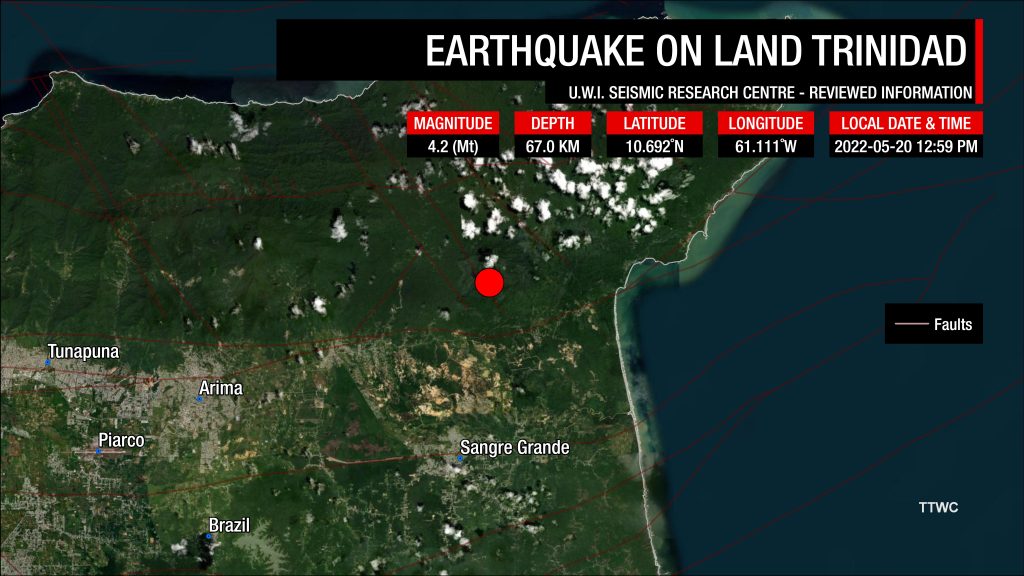
This information has been reviewed by an analyst at the UWI SRC, the authority for seismic and volcanological information in the English-speaking Eastern Caribbean.
You can submit felt reports to the University of the West Indies Seismic Research Centre.
There was no tsunami threat.
There are four conditions necessary for an earthquake to cause a tsunami:
- The earthquake must occur beneath the ocean or cause material to slide within or into the ocean.
- The earthquake must be strong, at least magnitude 6.5.
- The earthquake must rupture the Earth’s surface and it must occur at a shallow depth – less than 70 kilometers below the surface of the Earth.
- The earthquake must cause vertical movement of the seafloor (up to several meters).
None of these conditions occurred.
Note that different seismic monitoring agencies use different methods, or several methods, for processing quake parameters across the globe. Each method has its limitations and will likely produce different results within the range of the data’s uncertainty. This is generally accepted within the scientific community.
Read More
Earthquake Magnitude & Intensity
Can earthquakes be predicted or forecasted?
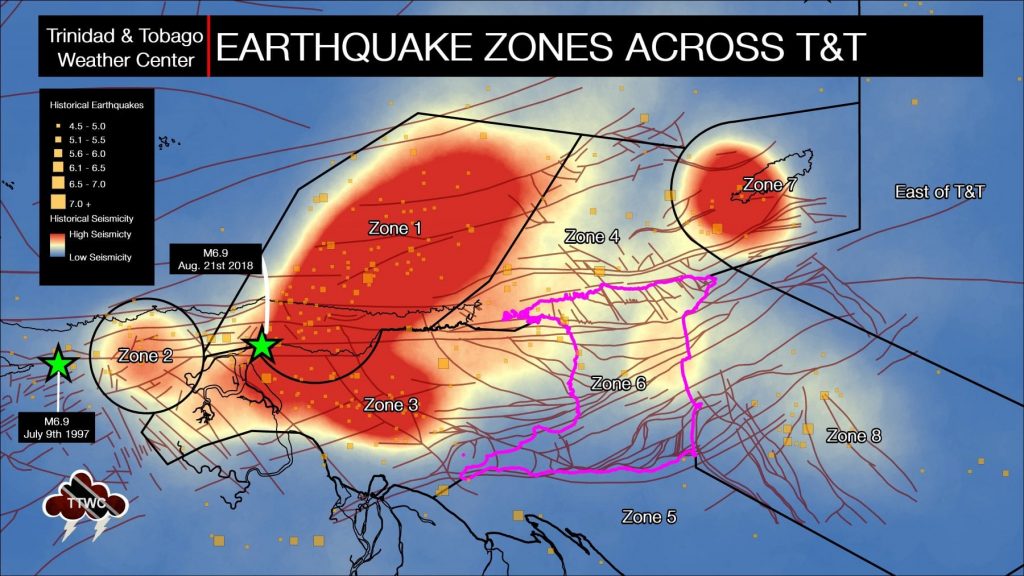
Trinidad is a highly faulted area, with several fault systems running across the island – all due to compensation of the lateral movement of the Caribbean and South American plates. Several major fault systems run across, on land, Trinidad, including the El Pilar Fault system, the Central Range Thrust Fault, Northern Range Fault, Darien Ridge, Los Bajos Fault, and the Arima Fault. Earthquakes on-land across Trinidad are typically less than 50 kilometers.
There was some variance in this typical depth due to an earthquake swarm in the Toco area in 2001. There have also been some moderate magnitude earthquakes occurring at a deeper depth.
According to the UWI SRC, since 1980 and before 2004, there have been, on average, 13 events annually, in general of magnitude less than 4.1. There was, however, one event in 1981 with a magnitude of 4.8. Since 2001, there has been an increase in the number of earthquakes recorded, with a sequence occurring in 2004/2005, which generated two events in the magnitude 5.1-5.5 range. Most of the events occur at depths below 20 kilometers.
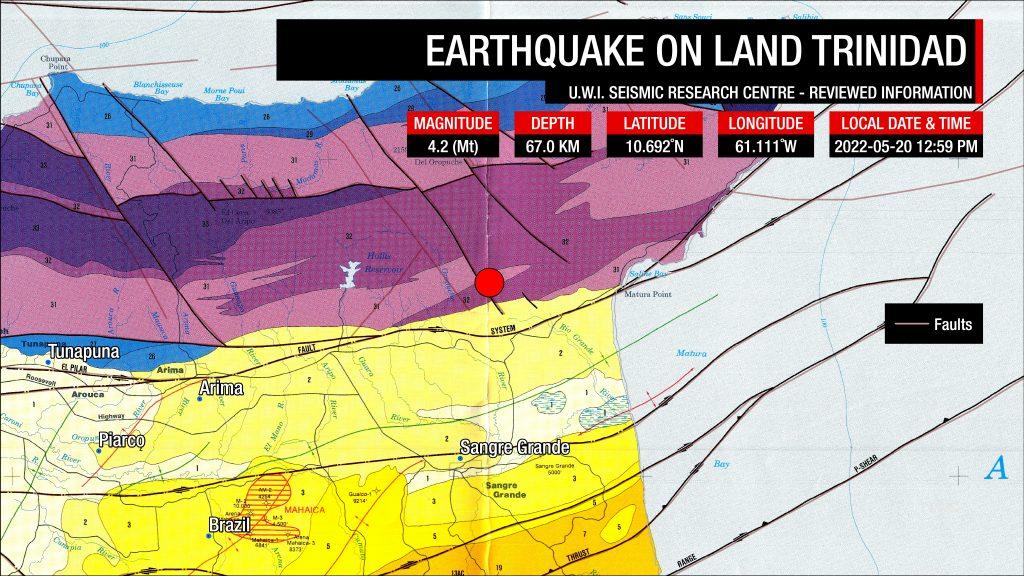
Where this particular earthquake occurred, within 10 kilometers of the epicenter, over 45 earthquakes have been located, with the strongest magnitude event, prior to Monday’s event, occurring on September 17th, 1987, at a magnitude of 4.2. Earthquake depths in this area are variable, between 3 and 51.9 kilometers.
Has there been an increase in seismic activity?
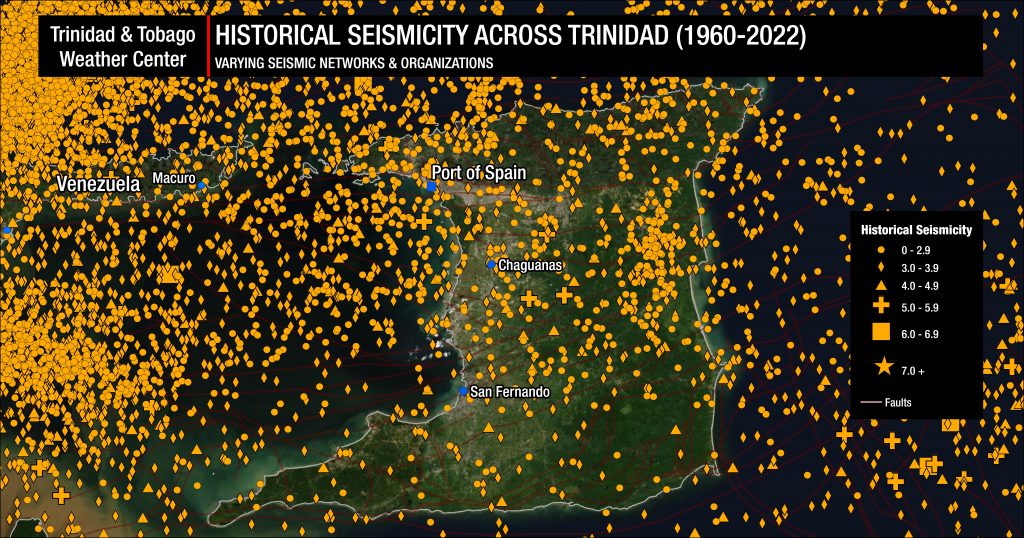
Trinidad and Tobago and the surrounding region are very seismically active. Across the Eastern Caribbean, over 2,200 earthquakes are recorded annually. Since 1990, the University of the West Indies Seismic Research Centre records an annual average of 280 earthquakes in the Trinidad and Tobago region (area bounded by 9.5°- 11.5°N & 59.5°W – 63.5°W). Of these 280 quakes, 50 of these seismic events are, on average, above magnitude 3.5.
Most earthquakes occur northwest of Trinidad in an area known as North of the Paria Peninsula, which has the second-highest seismicity in the Eastern Caribbean. According to the UWI SRC, approximately 65 events of magnitude 2.1 and above are located in the area annually.
However, the UWI SRC has said regional seismic and volcanic activity has been elevated for several years in their annual report for 2020 to 2021.
On average, the Eastern Caribbean has seen a pattern of major (M7.0-M7.9) quakes every 20 to 30 years. That pattern has stayed true. The last major (M7.0-7.9) quake occurred north of Martinique in 2007.
Historical patterns indicate that great quakes (M8.0+) on the Richter Scale have occurred every century in the region. The probability of another event at that level is high since the last >M8.0 earthquake occurred in 1843. While it is impossible to say definitively when the next great quake would occur in the region, the time since the last one is now more than 170 years ago.
It is important to note seismic activity *cannot* be predicted – meaning the precise time, date, magnitude, depth, etc., cannot be known ahead of time based on current research and technology.
Now is the time to create or go over your earthquake preparedness plan and know what to do during, before, and after an earthquake.








